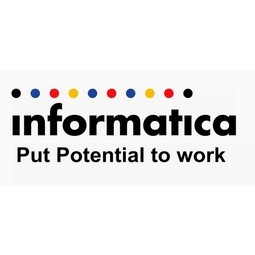下载PDF
Leveraging IoT to Combat Homelessness: A Case Study on Community Technology Alliance

技术
- 基础设施即服务 (IaaS) - 云计算
- 基础设施即服务 (IaaS) - 云存储服务
适用行业
- 城市与自治市
- 电信
适用功能
- 质量保证
用例
- 智能包装
- 现场人员安全管理
服务
- 云规划/设计/实施服务
- 系统集成
挑战
- 收集和整合来自多个政府和非营利机构的数据,以将有需要的人与可用的住房和人类服务相匹配
- 使住房提供者和人类服务机构能够协调和交换数据,这样他们的客户就不必联系多个提供者
- 帮助社区遵守 2009 年《无家可归者紧急援助和快速过渡到住房 (HEARTH) 法案》,以保留 HUD 拨款资金
客户
社区技术联盟
关于客户
社区技术联盟成立于 1991 年,旨在设计和建造必要的技术基础设施,以支持结束圣克拉拉县无家可归的工作。此后,CTA 已发展成为一家非营利组织,专注于数据库和其他工具通信和交换数据的方式,以及为报告和数据可视化目的而集成和集中存储数据的方式。
解决方案
- 使用 Informatica 智能云服务 iPaaS 连接数据孤岛,使机构能够通过 HOME 移动应用程序访问和输入数据
- 将有关客户、住房和服务的信息输入到托管在 Amazon Web Services (AWS) 上的数据湖中,可用于分析和报告
- 提供可信数据作为协调、集中评估和安置系统的基础,以优先获得住房和服务
运营影响
数量效益
相关案例.

Case Study
Turning A Stadium Into A Smart Building
Honeywell created what it called the “intelligent system” for the National Stadium in Beijing, China, turning the venue for the opening and closing events at the 2008 Summer Olympics into a “smart building.” Designed by highly controversial artist Ai Weiwei, the “Bird’s Nest” remains one of the most impressive feats of stadium architecture in the world. The 250,000 square meter structure housed more than 100,000 athletes and spectators at a time. To accommodate such capacity, China turned to Honeywell’s EBI Integrated Building Management System to create an integrated “intelligent system” for improved building security, safety and energy efficiency.
.png)
Case Study
Smart Street Light Network (Copenhagen)
Key stakeholders are taking a comprehensive approach to rethinking smart city innovation. City leaders have collaborated through partnerships involving government, research institutions and solution providers. The Copenhagen Solutions Lab is one of the leading organizations at the forefront of this movement. By bringing together manufacturers with municipal buyers, the Copenhagen Solutions Lab has catalyzed the development and deployment of next-generation smart city innovations. Copenhagen is leveraging this unique approach to accelerate the implementation of smart city solutions. One of the primary focus areas is LED street lighting.

Case Study
Buoy Status Monitoring with LoRa
The Netherlands are well-known for their inland waterways, canals, sluices and of course port activities. The Dutch Ministry of Infrastructure indicates that there are thousands of buoys and fixed items in and near water environments that would profit from IoT monitoring. One of the problems with buoys for example, is that they get hit by ships and the anchor cable breaks. Without connectivity, it takes quite some time to find out that something has happened with that buoy. Not to mention the costs of renting a boat to go to the buoy to fix it. Another important issue, is that there is no real-time monitoring of the buoys at this moment. Only by physically visiting the object on the water, one gains insight in its status.

Case Study
China Mobile Smart Parking
Smart Parking, powered by NB-IoT technology, is making it easier for drivers to find free parking spots. Cities can better manage their parking assets and maximize the revenue available to them as a result. Drivers searching for parking create congestion and pollution by circling and hunting for available parking. Smart Parking services are able to significantly ease these problems by guiding a driver directly to a parking space.

Case Study
Barcelona Case Study
Barcelona’s heavy traffic and its associated high levels of pollution were the primary factors that motivated some companies and universities to work on strategies for improving traffic in the city centre. Bitcarrier is one of the technologies involved in the In4Mo Project, whose main objective is to develop the applications that form the core of smart mobility, one of the fundamental pillars of the smart city concept.






